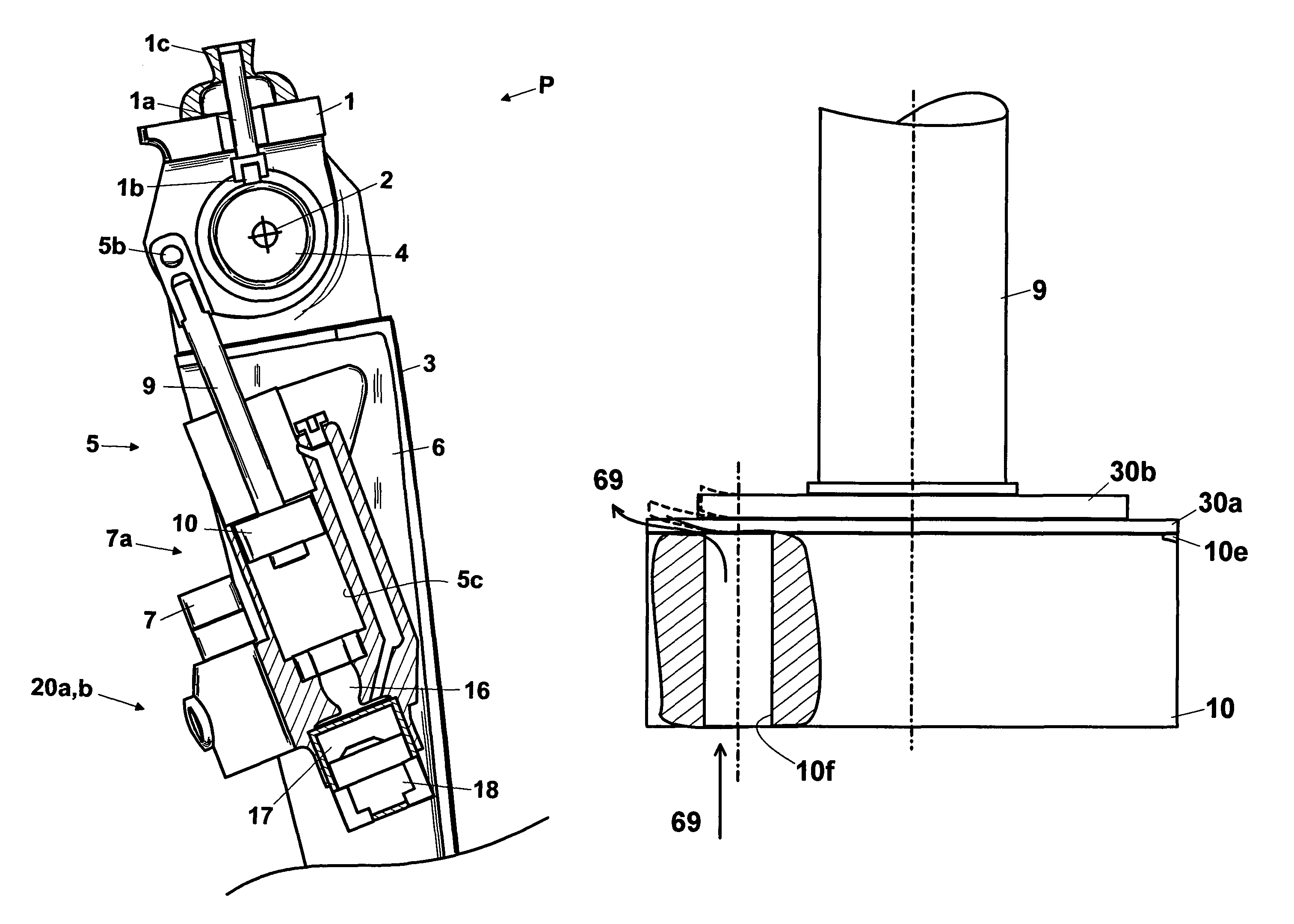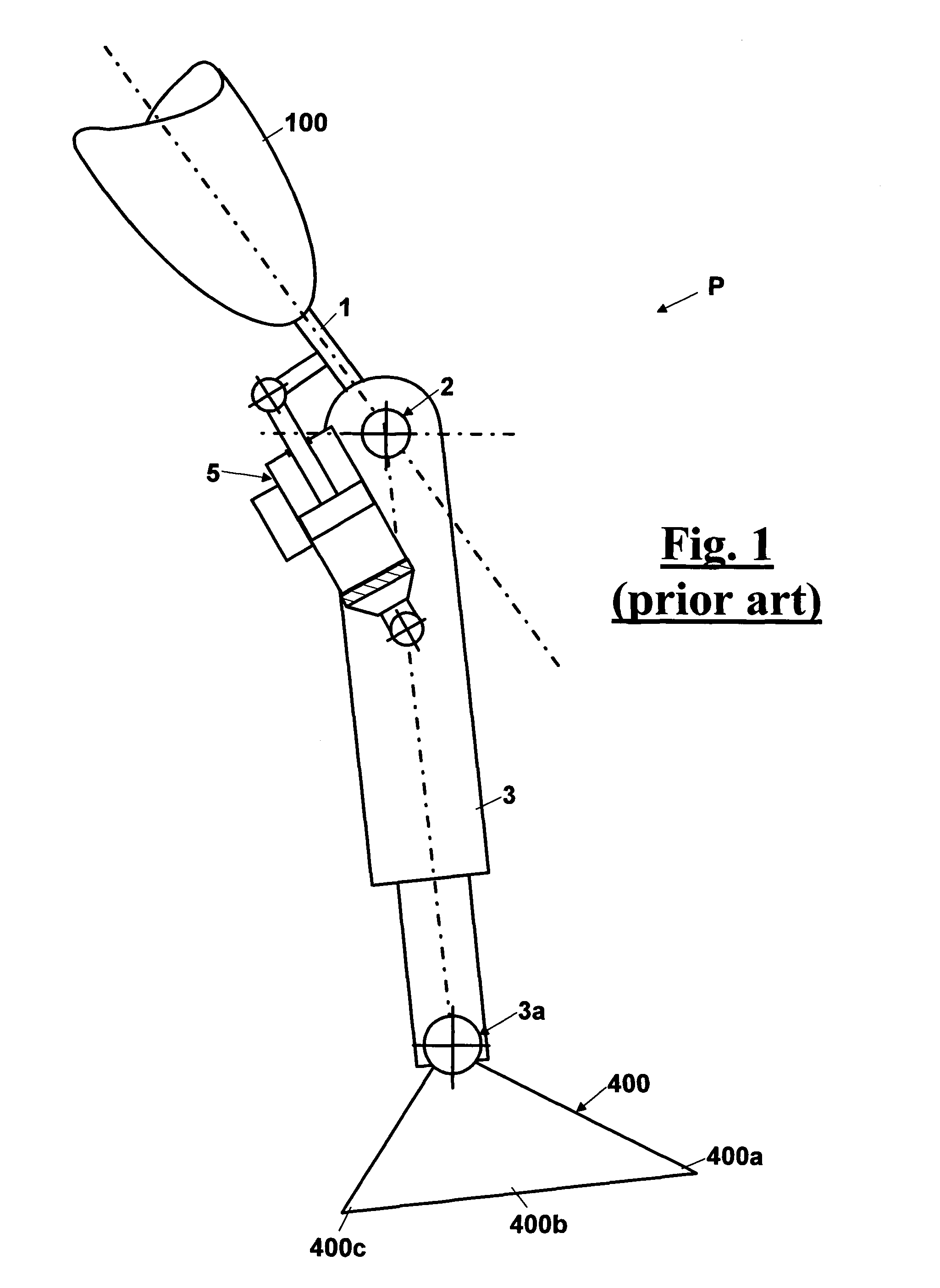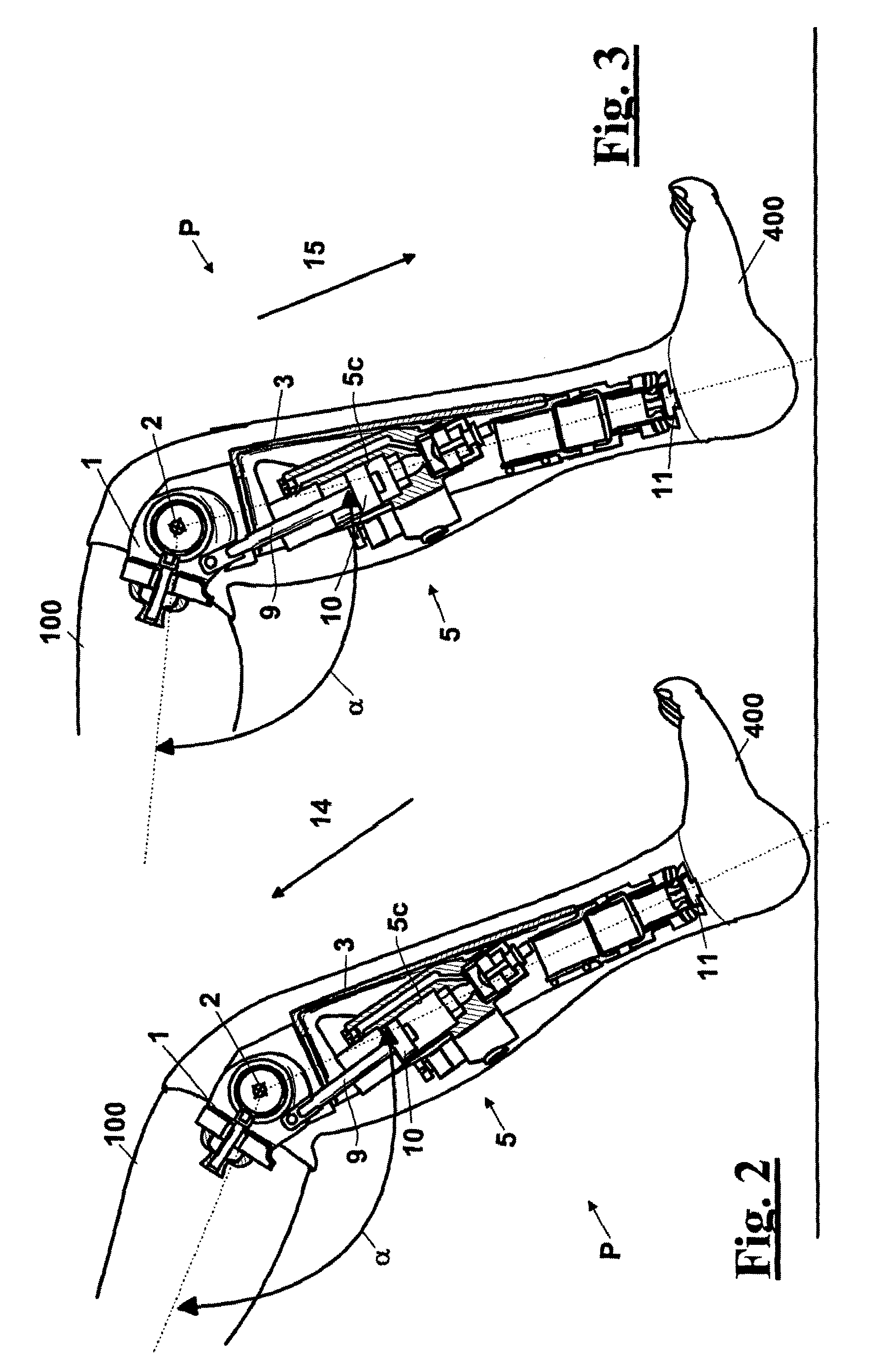Automatic prosthesis for above-knee amputees
an amputee and prosthesis technology, applied in the field of orthopaedic appliances, can solve the problems of toe clearance, risk of toes hitting the ground during the swing phase, and the risk of toes hitting the ground during the swing phase, and achieve the effect of restoring the gait ability of amputees
- Summary
- Abstract
- Description
- Claims
- Application Information
AI Technical Summary
Benefits of technology
Problems solved by technology
Method used
Image
Examples
Embodiment Construction
[0155]With reference to FIG. 1, a diagrammatical kinematik view is shown of a prosthesis P of prior art for above-knee amputees, applied to a femoral connection 100 of a possible patient, comprising:[0156]an upper hinge or femoral segment 1 belonging to prosthesis P that accomplishes the connection with the femoral connection 100 of the patient;[0157]an articulation axis 2 that connects femoral segment 1 with a tibial segment 3 and reproduces the movement of a normal knee;[0158]an ankle 3a that connects tibial segment 3 with a prosthetic foot 400;[0159]a damper 5 located between femoral segment 1 and tibial segment 3 that dampens the relative movement between the above described segments and allows the above knee prosthesis P to repeat some of the functions of a normal limb.
[0160]In particular, in the above knee prosthesis P, of FIG. 1, femoral segment 1 and tibial segment 3 are pivotally connected to each other about articulation axis 2 that reproduces the knee movements. Furthermo...
PUM
 Login to View More
Login to View More Abstract
Description
Claims
Application Information
 Login to View More
Login to View More - R&D
- Intellectual Property
- Life Sciences
- Materials
- Tech Scout
- Unparalleled Data Quality
- Higher Quality Content
- 60% Fewer Hallucinations
Browse by: Latest US Patents, China's latest patents, Technical Efficacy Thesaurus, Application Domain, Technology Topic, Popular Technical Reports.
© 2025 PatSnap. All rights reserved.Legal|Privacy policy|Modern Slavery Act Transparency Statement|Sitemap|About US| Contact US: help@patsnap.com



